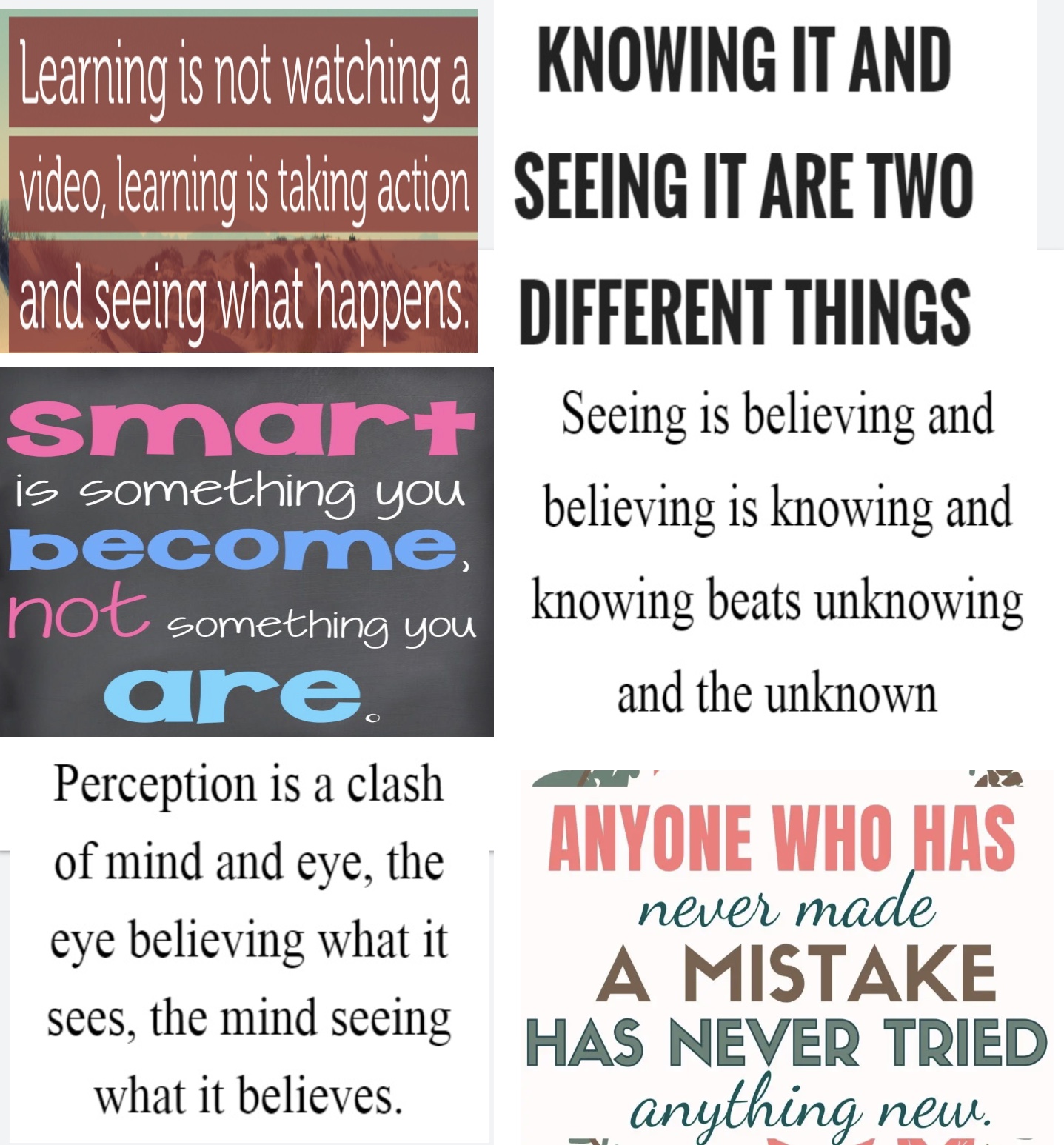
Perceptual (SEEING), IMPULSE CONTROL (yes, yes, yes, NO) and kinetic proprioception/strategic approach (getting the barrel to the ball) are THE MAIN COGNITIVE SKILLS involved in hitting a baseball/softball and being an elite level hitter. + being CONFIDENT & having a growth MINDSET.
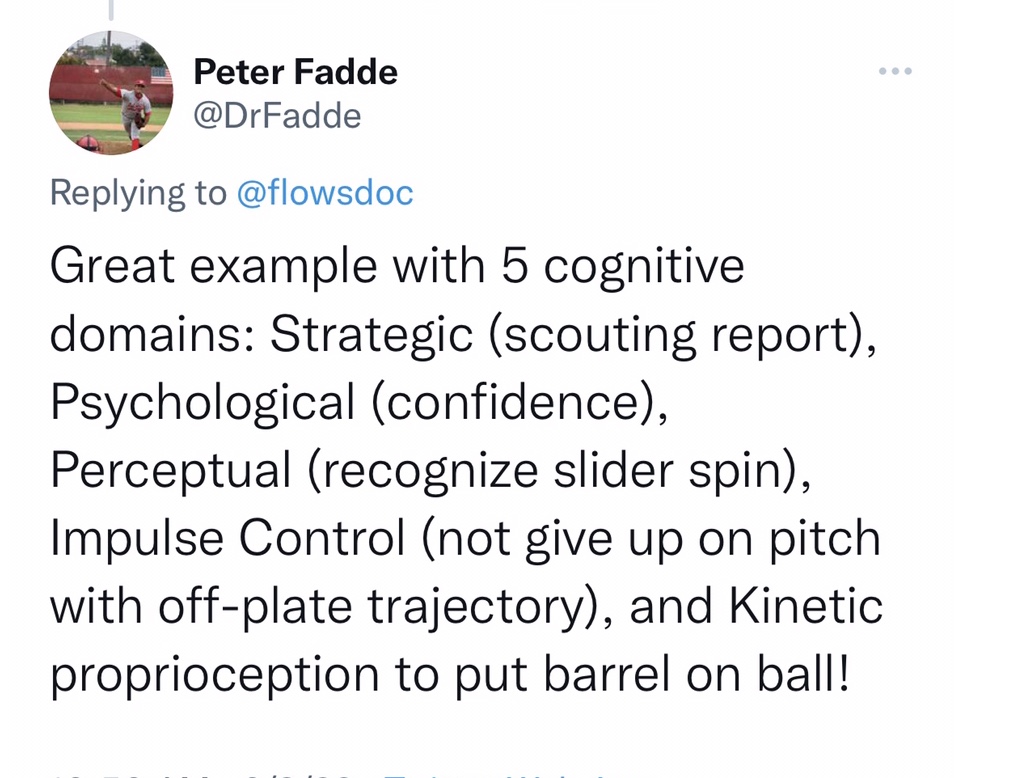
Perceptual/motor processing a.k.a. pitch recognition ”sits on top of the hitting pyramid”- figuring out as earlier as possible — either BEFORE or shortly after the pitcher’s release — the hitter should have figured out the type of pitch coming. Dr. Peter Fadde with GameSense is the most brilliant mind on this topic and has developed many simple drills (especially occlusion training) to help test & develop this skill. I highly recommend his training protocols.
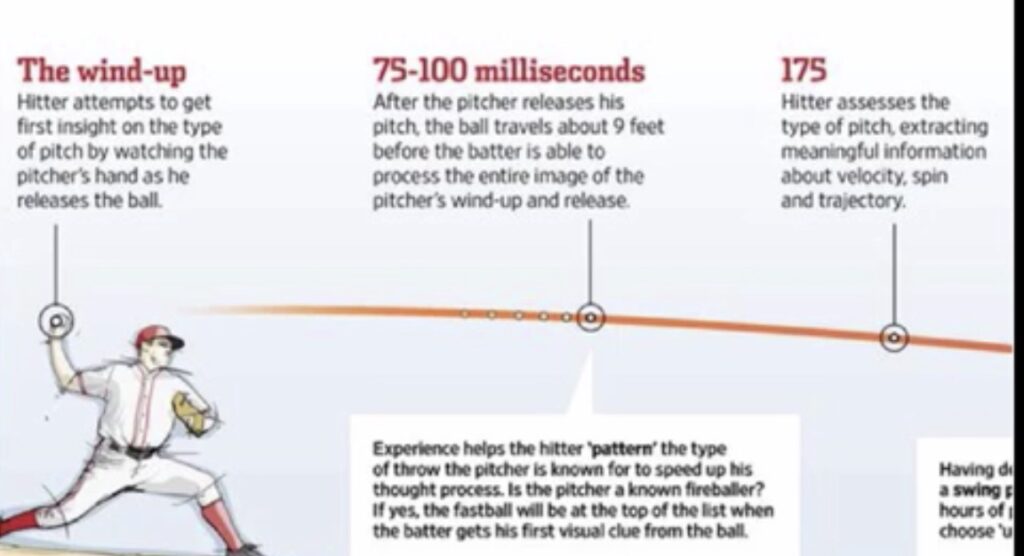
Impulse control happens milliseconds later where the hitter is forced to determine: is this pitch a ball or a strike? Is this a pitch that is in my hit zone? Is this a pitch that I can do damage on? OR is this the pitcher’s attempt to get me to chase?
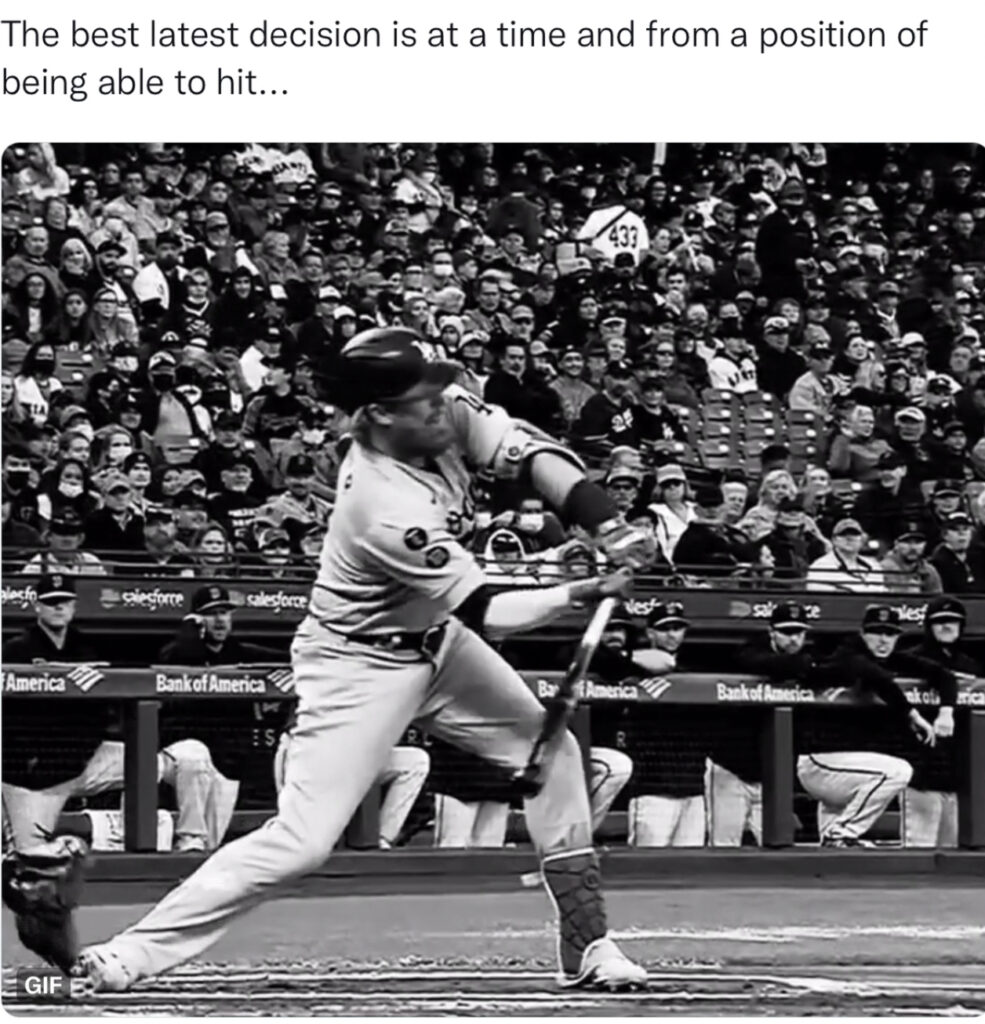

Lastly, the ”secret” to maximizing the effectiveness of pitch recognition and impulse control is to intertwine them with the 3rd cognitive trait of kinetic proprioception and strategic approach —IOW, develop motor programs specific to the pitch you are looking for.
- GAME PLANNING.
- SWING APPROACH.
- PROFILING PITCHERS.
- APPLYING DATA.
But in order to implement STRATEGIC PLANNING, & build MOTOR PROGRAMS for specific game situations it takes deliberative practice and critical thinking — which is a very different trait & skill from an actual in game at bat. Lots of professional hitters ”HATE” this type of preparation – but to keep pace with pitchers evolution it is a necessary ”evil”. Like eating your spinach when we were young; it’s good for you whether you like it or not — and it is going to make you better, so pinch your nose and take a BIG SWALLOW.
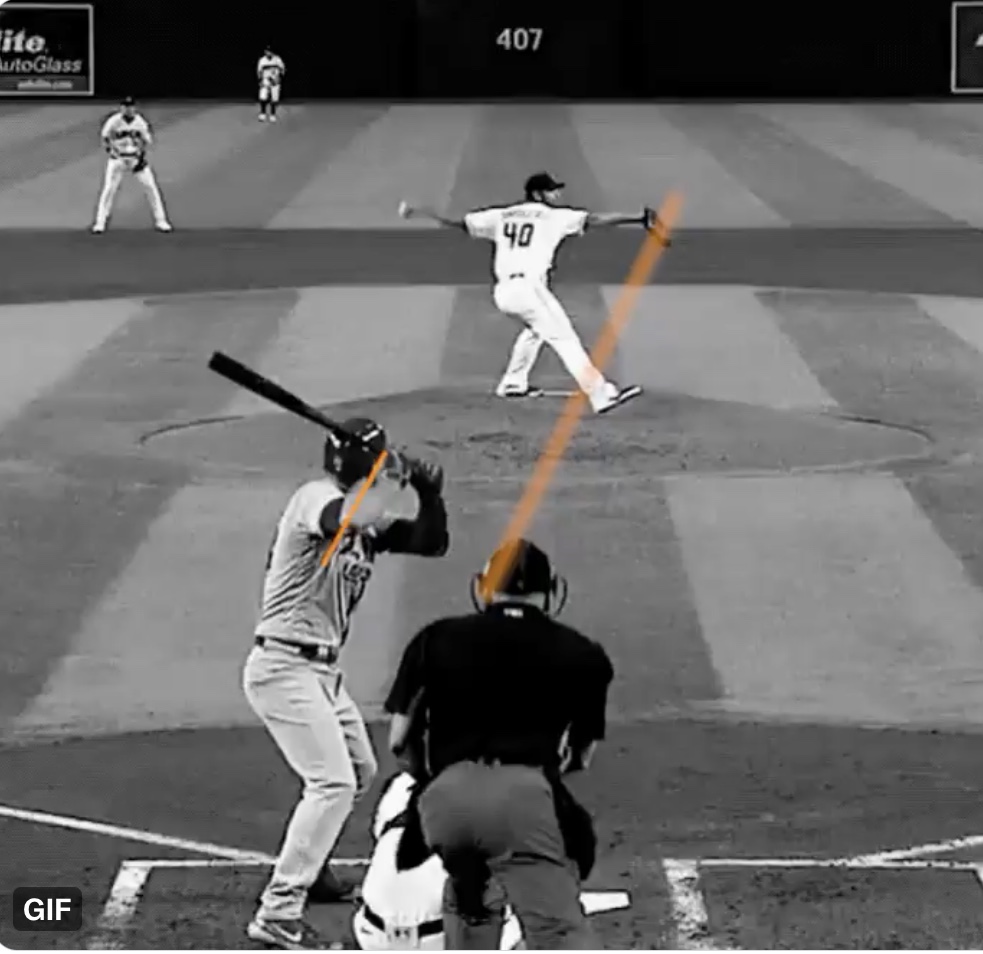
These distinct traits should be practiced, developed and tested separately YET simultaneously til mastered then merged into motor programs/game hitting approaches and live at bats.
When you as a parent or hitting coach work with a hitter, you NEED TO KNOW & ASSESS where that hitter has progressed on each of these cognitive skills. It MATTERS, and determines WHAT HAPPENS NEXT.
For instance, when I met up with Christi Orgeron or Nerissa Myers – both were juniors or seniors in high school and neither one had extensive experience in select ball facing top level pitching – so neither had a COGNITIVE DATA BASE to read early cues or ”tells” from a pitcher. Neither could pass the pitch recognition occlusion test where the video screen goes to black & blank shortly after pitcher’s release.
In fact, Nerissa still played slow pitch softball at her high school and Christi was a star soccer player and did not turn her serious focus to softball til around 17. BUT both became All-Americans; Christi played for the U.S. National team and won gold and Nerissa was the MVP as a pro in the National Pro Softball (NPF) League. Read more at SWING ATTRACTORS under the heading, Cajuns Top Hitters.
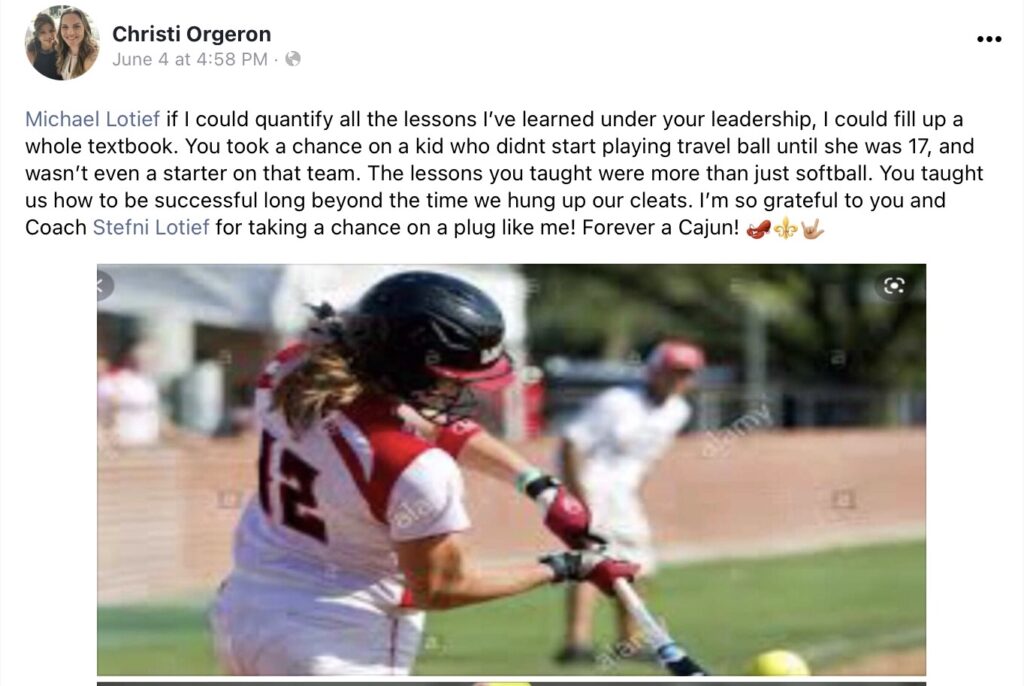
- The protocols we developed and practiced & trained with involved pitch recognition everyday.
- It involved decision making (impulse control) every pitch — minimum of 200 per day.
- And it involved a motor program or approach prescribed that I wanted them to become proficient with so we could have the best chance to win in post-season against college softball’s best pitchers.

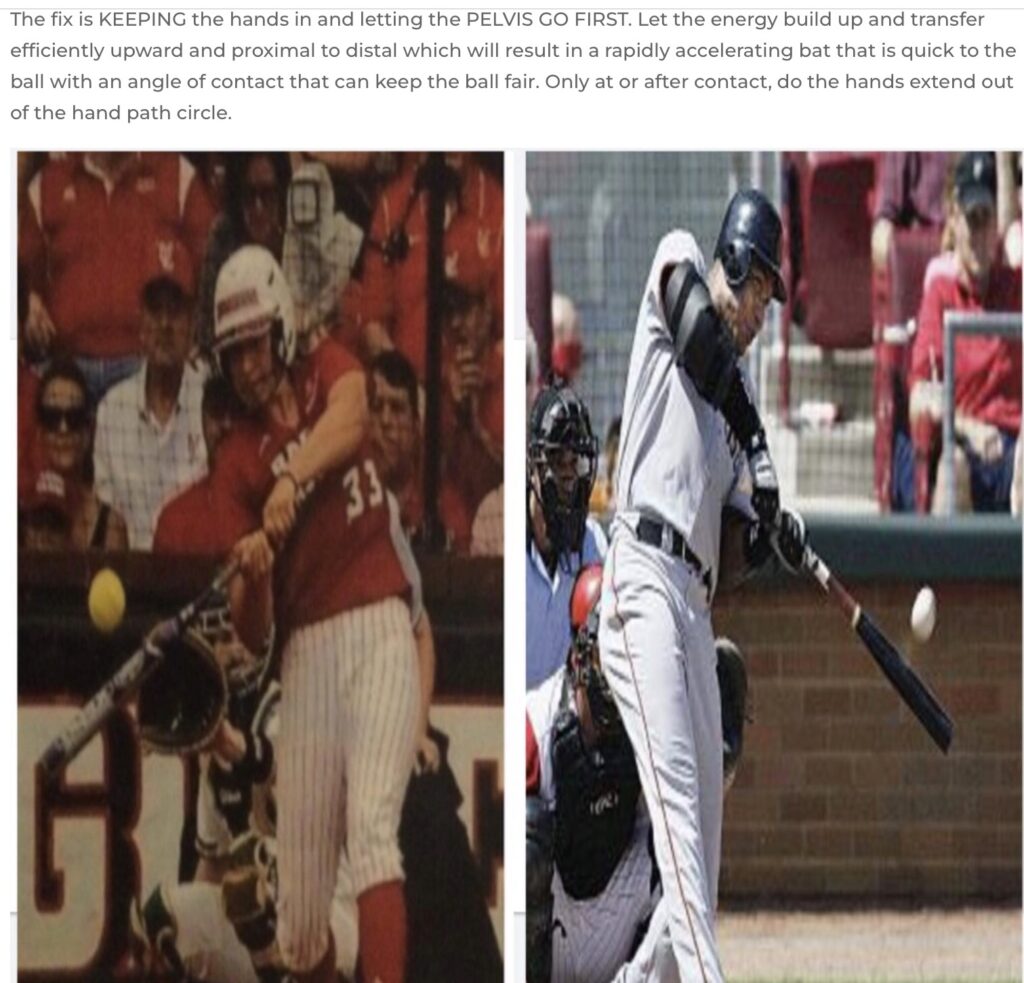
With Lexi Elkins on the other hand, she had the perceptual skills and the memory data base (especially being a catcher) but she needed a whole new kinetic proprioceptive rewiring to go from ”get your foot down early” and ”hit a ground ball” to ”load and coil and rotate your pelvis with a high rate of force development“ and see how far & hard you can hit the ball — which was a LONG WAY.
If you are lucky enough to get a player who is proficient at all 3 cognitive areas, then start live scrimmaging and simulate active strategic hitting approaches against different types of pitchers and pitches. Collect data and develop that hitter’s heat map so he/she understands his/her strengths and weaknesses.
M.L.B. PITCH PAIRING & ALL KINDS OF DOORS
Part of becoming a better hitter now is also understanding what PITCHERS are doing with PITCH DESIGN. It’s more than just changing linear velocity via fastball command.
As a good hitter, you should have built into your swing (especially in more than one of your motor programs), the ability to create a ”BUFFER” which gives you the ability to cover pitches within a 7-12 m.p.h. linear change of speed.
Pitchers are relying on tunneling, increased movement and spin rate, changing arm angles and drastically changing pitch angles.
BOTTOM LINE: pitchers are “PAIRING” or ”MIRRORING” SECONDARY PITCHES that work effectively alongside their fastball command to all 4 quadrants.
Besides creating pitch angles and more spin rate, pitchers like Corbin Burnes below are throwing back ”door” cutters with wicked movement to complement their 2 & 4 seam FB. WATCH THE VIDEO BELOW!
Not talked about enough to even have a “DOOR” coined for them until now are the chase riseball or chase 4 seam FB, — let’s use the ATTIC HATCH concept and call it the TRAP DOOR.
Consider this comment by a MLB pitcher recently, ”I want to MIRROR my high vertical spin curveball with my high vertical spin fastball, in the opposite direction”.
And now, how about the CELLAR DOOR or BASEMENT DOOR.

It’s the pitcher’s intent to challenge a hitter’s pitch recognition skills & impulse control and get him/her to ”CHASE”.
For instance, a hitter is instinctively wired and geared for the pitcher’s FASTBALL/VELOCITY. So by a pitcher throwing nasty sliders 6-8 inches out of the zone, it is his design to TRICK THE HITTER to “SEE” HIS FASTBALL COMING but IN ACTUALITY to “chase” that “chase slider”.
When the hitter “gives in” and chases, there was a breakdown in that hitter’s perceptual and impulse control cognitive traits – wrong pitch recognized (fastball instead of a slider) and breakdown in IMPULSE CONTROL – should’ve taken the chase slider instead of swinging.
Being wrong happens a lot! IT HAPPENS PROBABLY WITHIN EVERY AT BAT.

Hitters with the right mindset learn from it and go back to ”work”, especially if afforded the best training tools, right data/information and a competitive/competent environment. Remember, in hitting you only have to be RIGHT ONE TIME PER AT BAT & GET YOUR BEST SWING OFF.
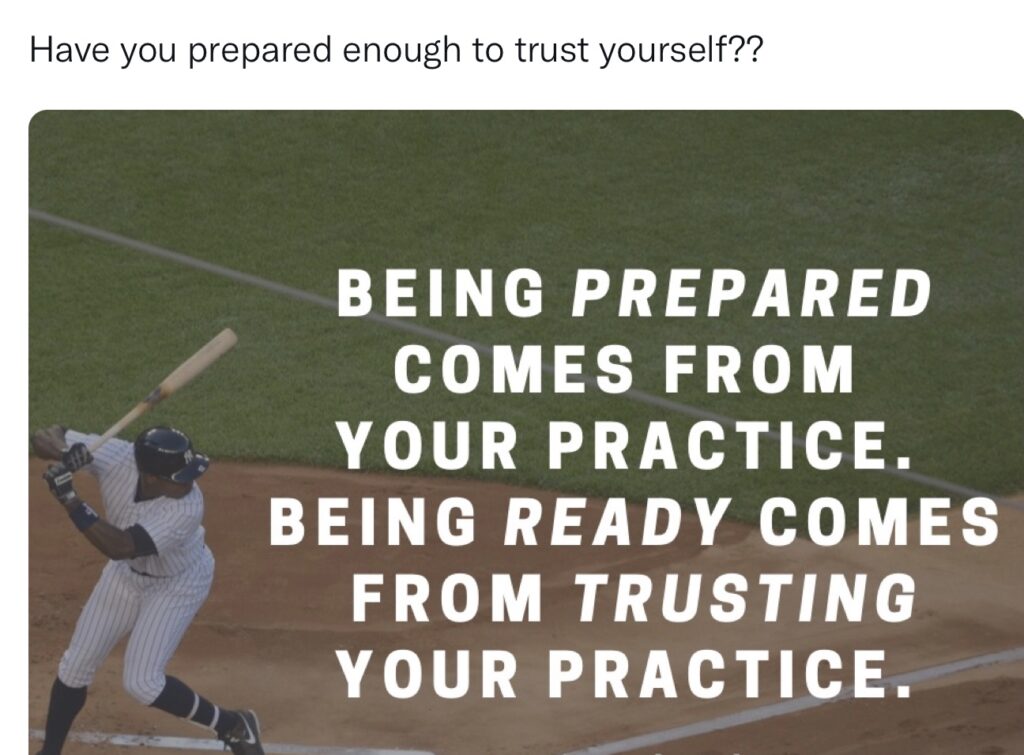
More coming in the weeks ahead on these fascinating topics.
PURSUE EXCELLENCE & WIN THIS PITCH!
About the Author

Mike Lotief coached 17 successful years as either the head softball coach or co-head softball coach with his wife Stefni Whitton Lotief at the University of Louisiana from 2002-2017 with an overall coaching record of 731-176 (80.6 winning percentage). Every season, the Ragin Cajuns softball team advanced to the NCAA tournament and also advanced to three (3) Women’s College World Series (2003, 2008, 2014) and from 2012-2016 advanced to five (5) straight NCAA Super Regionals. Coach Lotief produced over 40 All American selections and his 2017 team lead the nation in scoring and was ranked in the Top 10 in home runs, slugging percentage, on base percentage.
The coach is a cancer survivor (twice) and was the first person in the U.S. to receive the Pro Trach device. Mike and Stefni spearheaded and raised the funding to build the new softball stadium in 2009 and the new softball indoor hitting facility in 2015. They are proud parents to Chelsea, who played softball and graduated from the Univ. of Louisiana in 2018, and Andrew, who is a junior at Louisiana studying Mechanical Engineering.
Previous Articles in this Series
- The Mental Swing Attractors: Failure Cannot Break You (Nov. 11, 2021)
- Training Insights: “Swing Attractors” by Coach Mike Lotief… the Flaws of Pelvic Loading (Nov. 9, 2021)
- The Mental Swing Attractors: Push Yourself… You Don’t Have to Be #1 to BE #1! (Nov. 4, 2021)
- Training Insights: “Swing Attractors” by Coach Mike Lotief… Pelvis Loading, Part 2—The Planes of Movement (Nov. 2, 2021)
- The Mental Swing Attractors: Remove the Rope from Your Ankle & Get Rid of the Limiting Beliefs! (Oct. 28, 2021)
- Training Insights: “Swing Attractors” by Coach Mike Lotief… Pelvis Loading, Part 1—It’s All in the Hips (or Somewhere Deep Below) Oct. 26, 2021
- The Mental Swing Attractors: Champions are Developed by Devotion & Discipline! (Oct. 21, 2021)
- Training Expertise: “Swing Attractors”… the Secrets of Power Hitting by Coach Mike Lotief (Oct. 19, 2021)
More About Mike Lotief
- Why Michael Lotief is a Legendary Coach? by Jay Patel
- The Secret To Michael Lotief’s Success. By Jay Patel
- Michael Lotief Fights for Rajin’ Cajuns by Graham Hays ESPN
- Michael Lotief: Taking His Sport to New Heights by Neha Kapoor
- For the Love of the Game: A Look at Ragin’ Cajun Softball’s Power Couple
- How Louisiana-Lafayette’s Michael Lotief Develops Hitting Gems by Graham Hays ESPN
